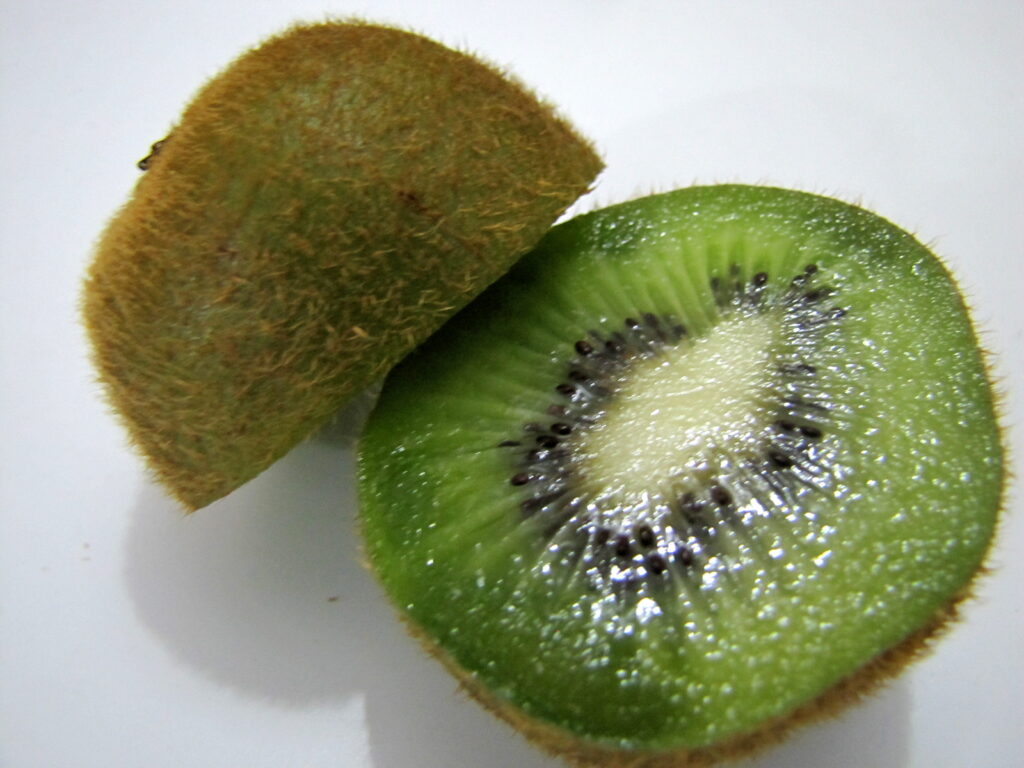Indulging in the juicy sweetness of a ripe kiwi is a culinary delight that tantalizes taste buds. However, discerning between a pristine piece of fruit and one that has succumbed to spoilage can be a challenge. To safeguard your health and ensure the most delectable experience, it is imperative to master the art of identifying and discarding spoiled kiwis.

Image: www.chefsresource.com
Identifying the Signs of a Spoiled Kiwi: A Telltale Checklist
-
Unnatural Skin Discoloration: While kiwis naturally exhibit a range of hues from light green to deep brown, drastic deviations from these shades indicate potential spoilage. Avoid kiwis with excessive yellowing, blackening, or mold growth.
-
Unnatural Softness or Mushiness: Fresh kiwis possess a gentle firmness, yielding slightly to gentle pressure. However, excessive softness or a mushy texture suggests an advanced stage of decay.
-
Unpleasant Odors: A fresh kiwi emanates a subtle, fruity aroma. If you detect a pungent or sour odor, it is a clear indication that the fruit has gone bad.
-
Mold and Rot: The presence of mold or rot is an unmistakable sign of spoilage. Discard any kiwi that displays these telltale signs, as they indicate a severe degradation of the fruit.
-
Liquefied or Leaking Juice: A spoiled kiwi may release its juice, leaving a sticky residue or a puddle around it. This leakage signifies a breakdown of the fruit’s cellular structure.
-
Wrinkled or Damaged Skin: Fresh kiwis boast smooth, vibrant skin. Significant wrinkling or visible damage can indicate dehydration or mishandling, leading to a shortened shelf life.
The Importance of Discarding Spoiled Kiwis: Beyond Taste Preferences
Consuming spoiled kiwis poses potential health risks. Bacterial growth and spoilage can lead to foodborne illnesses characterized by symptoms such as nausea, vomiting, and diarrhea. Additionally, consuming spoiled or moldy fruits can contribute to allergic reactions or digestive upset. In pregnant women, consuming spoiled foods can harm the developing fetus.
Preserving the Pristine Goodness of Kiwis: Storage Tips
-
Cool and Dry Storage: Kiwis thrive in cool and dry environments. Store them at temperatures between 32°F and 40°F to prolong their freshness.
-
Unripe Kiwis: Unripe kiwis should be stored at room temperature until they ripen to the desired level of softness.
-
Separate Storage: Keep kiwis separate from other ethylene-producing fruits such as bananas and apples, as these gases can accelerate ripening.
-
Refrigerated Storage: Cut or peeled kiwis should be stored in an airtight container in the refrigerator for up to three days.
By embracing these storage guidelines and diligently inspecting your kiwis, you can enjoy the delectable taste of fresh fruit while avoiding the perils of spoilage. Remember, when in doubt, it is always better to discard a questionable kiwi than to risk adverse effects on your health.

Image: fruitonix.com
How Do I Know If Kiwi Is Bad


/GettyImages-1303637-two-way-mirror-57126b585f9b588cc2ed8a7b-5b8ef296c9e77c0050809a9a.jpg?w=740&resize=740,414&ssl=1)


